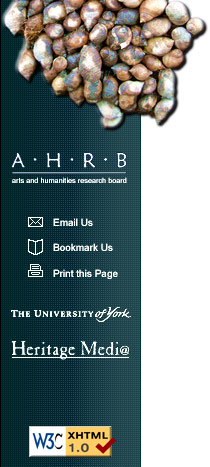









![]()
Geoff Bailey
I have been interested in shell middens as a global phenomenon and the development of field and laboratory techniques for their investigation over a 30-year period, including several spells of fieldwork in Europe and Australia, and visits to sites and field investigations in many other parts of the world. My research interests have followed two related pathways:
-
The methodology of midden analysis, including the understanding of shell deposits as material residues, the factors involved in their formation and deformation, the reasons for their differential visibility and distribution in space and time, and the maximisation of the information that analysis of the shells themselves can provide about changes in palaeoenvironment, palaeodiet and palaeoeconomy.
-
Development of an improved understanding of the role of coastlines and marine resources both in regional prehistories and in the broader sweep of human development and world prehistory. Increasingly my interests have focussed on the need to invest effort in exploring the archaeological evidence for use of marine resources before the era of modern sea level initiated about 6000 years ago, and the exploitation of the now-submerged Pleistocene and early Holocene coastlines of the continental shelf, which must have provided attractive areas for human settlement.
In the past three years, with the help of a Leverhulme Trust Major Fellowship. I have concentrated on three objectives:
-
Raising grant funding for new field and laboratory investigations. The AHRB grant is one outcome of that process. Another is a new project now underway in the Red Sea Basin to investigate Palaeolithic coastlines above and below present sea level, and funded by NERC as part of its thematic programme on Environmental Factors in Human Evolution and Dispersal. A third is the excavation of an unusually early coastal Mesolithic site on the Northumberland coastline of Northern England, funded by English Heritage and the Heritage Lottery Fund, and run in collaboration with Clive Waddington and Nicky Milner.
- Visiting centres of major shell midden archaeology in previously unfamiliar areas of the world, notably in Brazil and Japan.
- Bringing together these various interests in a global synthesis on the archaeology of coastlines.
My role in this project is to help identify the key problems in need of investigation and provide contacts for fieldwork and sources of material, to coordinate the different research activities and the integration of their results, and to place the Northwest European evidence in its wider context, both in relation to comparable developments elsewhere, and in relation to the longer time perspective made available by Pleistocene and early Holocene evidence on the coastlines of southern Europe.
-
Bailey, G.N. In press. The Archaeology of Coastlines: a World Prehistory. Cambridge: Cambridge University Press.
-
Bailey, G.N. & Spikins, P.A. (eds.) In press. Mesolithic Europe. Cambridge: Cambridge University Press.
-
Bailey, G.N. & Milner N.J. In press. The Faunal Remains. In C. Waddington (ed.). Howick: a Coastal Mesolithic Site in Northumberland. Oxford: Oxbow.
-
Bailey, G.N. In press. The palaeogeography of the North Sea basin. In K.Pedersen & C. Waddington (eds.) The Late Palaeolithic and Mesolithic of the North Sea Basin. Oxford: Oxbow.
-
Bailey, G.N. In press. World prehistory from the margins: three themes in coastal archaeology. In M. Parker-Pearson (ed.). Landscapes and Seascapes. Oxford: Oxbow
-
Bailey, G.N. In press (2004). World prehistory from the margins: the role of coastlines in human evolution. History, Culture and Archaeology: Journal of Interdisciplinary Research 1
-
Bailey, G.N. 2004. The wider significance of submerged archaeological sites and their relevance to world prehistory. In N.C. Flemming (ed.) Submarine prehistoric archaeology of the North Sea: research priorities and collaboration with industry. London: CBA Research Report 141, ISBN 1-902771-46-X.
-
Milner, N., Craig, O.E Bailey, G.N., Pedersen, K. & Andersen S.H. 2004. Something fishy in the Neolithic? A re-evaluation of stable isotope analysis of Mesolithic and Neolithic coastal populations. Antiquity 78: 9–22.
-
Bailey, G.N. & Milner, N.J. In press. The marine molluscs from the Mesolithic and Neolithic deposits of the Norsminde shell midden. In S. Andersen (ed) Stone Age Settlement in the Coastal Fjord of Norsminde, Jutland, Denmark.
-
Flemming, N., Bailey, G., Courtillot, V., King, G., Lambeck, K., Ryerson, F. & Vita-Finzi, C. 2003. Coastal and marine palaeo-environments and human dispersal points across the Africa-Eurasia boundary. In C.A. Brebbia & T. Gambin (eds.) The Maritime and Underwater Heritage, pp. 61–74. Southampton: Wessex Institute of Technology Press.
-
Waddington, C, Bailey, G., Boomer, I., Milner, N. & Shiel, R. (2003) A Mesolithic coastal site at Howick, Northumberland. Antiquity 77 (295) http://antiquity.ac.uk.
-
Waddington, C., Bailey, G., Bayliss, A., Boomer, I., Milner, N., Shiel R. & Stevenson, T. 2003. A Mesolithic settlement site at Howick, Northumberland: a preliminary report. Archaeologia Aeliana 32: 1–12.
-
Bailey, G.N. & Craighead, A. 2003. Late Pleistocene and early Holocene coastal palaeoeconomies: a reconsideration of the molluscan evidence from Northern Spain. Geoarchaeology: an International Journal 18 (2): 175–204.
-
Bailey, G.N. & Milner, N.J. 2002. Coastal hunters and gatherers and social evolution: marginal or central? Before Farming: the Archaeology of Old World Hunter-Gatherers 3–4 (1): 1–15. (Available online at <http://waspjournals.com>).